
Welcome to Hyperion Records, a British classical label devoted to presenting high-quality recordings of music of all styles and from all periods from the twelfth century to the twenty-first.
Hyperion offers both CDs, and downloads in a number of formats. The site is also available in several languages.
Please use the dropdown buttons to set your preferred options, or use the checkbox to accept the defaults.

from notes by Jim Samson © 2009
extrait des notes rédigées par Jim Samson © 2009
Français: Hypérion
aus dem Begleittext von Jim Samson © 2009
Deutsch: Viola Scheffel
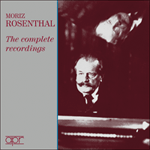 Moriz Rosenthal - The complete recordings Moriz Rosenthal - The complete recordings‘Rosenthal had an inimitably seductive manner of playing … with Ward Marston’s superb restoration and remastering, APR’s exemplary annotation and ... ‘The artistry of Moriz Rosenthal (1862-1946) arguably stands head and shoulders above all recorded Liszt pupils’ (Classics Today)» More |
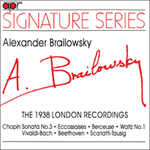 Alexander Brailowsky - The 1938 London Recordings Alexander Brailowsky - The 1938 London Recordings‘This will be a revelation to those who remember Brailowsky from his post-war recordings … here preserved in excellent transfers, he shows himsel ...» More |
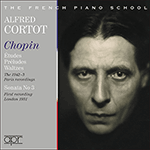 Alfred Cortot - The 1942-3 Paris Chopin recordings Alfred Cortot - The 1942-3 Paris Chopin recordingsAlfred Cortot stands as the greatest representative of 20th-century French pianism. This album focuses on the solo recordings he actually made in France, all recorded in Paris during World War 2, and originally only released locally. These wonderf ...» More |
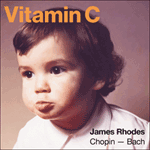 Chopin & Bach: Vitamin C Chopin & Bach: Vitamin CA programme of Chopin and Bach—including a new transcription by Vikingur Ólafsson—representing music close to the soul of the performer.» More |
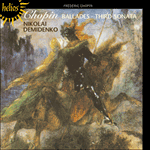 Chopin: Ballades & Sonata No 3 Chopin: Ballades & Sonata No 3‘Lovely playing which I enjoyed from first note to last for its poetry and passion as well as seemingly effortless keyboard fluency and command’ (Gram ... ‘The Scherzo is as light as gossamer and the finale has both a heroic sense of struggle and passages of the most delicate filigree. Demidenko keeps yo ...» More |
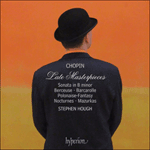 Chopin: Late Masterpieces Chopin: Late MasterpiecesStephen Hough joins the celebrations for Chopin’s 200th birthday with a disc containing much of the composer’s most extraordinary music, written in the last years of his life where the possibilities of his art were constantly unfolding as he imbue ...» More |
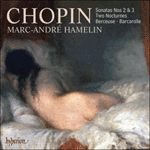 Chopin: Piano Sonatas Nos 2 & 3 Chopin: Piano Sonatas Nos 2 & 3The great Marc-André Hamelin turns his attention to two mainstays of the Romantic repertoire: Chopin’s Piano Sonatas Nos 2 and 3. The results are simply staggering: playing of matchless brilliance and consummate artistry, stunningly recorded. The ...» More |
 Chopin: Piano Sonatas Nos 2 & 3 Chopin: Piano Sonatas Nos 2 & 3Described in 1840 by Robert Schumann as comprising ‘four unruly children smuggled under this name into a place they could not otherwise have penetrated’, Chopin’s Piano Sonata No 2 is now a stalwart of the repertoire, and for this new recording by ...» More |
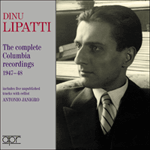 Dinu Lipatti - The complete Columbia recordings, 1947-1948 Dinu Lipatti - The complete Columbia recordings, 1947-1948 |
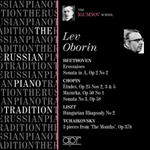 Lev Oborin - Beethoven, Chopin & Liszt Lev Oborin - Beethoven, Chopin & Liszt Classical Music» More Classical Music» More |
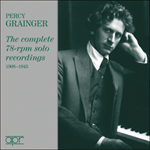 Percy Grainger - The complete 78-rpm solo recordings Percy Grainger - The complete 78-rpm solo recordings‘Here’s something a little bit special to mark the fiftieth anniversary of the death of Percy Grainger … Grainger was a charismatic pianist and a ... ‘The best of Grainger’s shellac efforts retain their vividness and communicative immediacy. Even if Grainger had never met and befriended Grieg, his i ...» More |
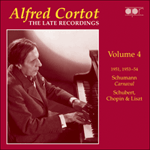 Alfred Cortot – The Late Recordings, Vol. 4 - Schumann, Schubert, Chopin & Liszt Alfred Cortot – The Late Recordings, Vol. 4 - Schumann, Schubert, Chopin & Liszt'Bryan Crimp has done Cortot proud, prompting one to wonder whether there was ever a pianist of greater human richness and coruscating vitality' (Gram ...» More |
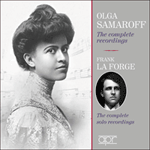 Olga Samaroff & Frank La Forge - The complete recordings Olga Samaroff & Frank La Forge - The complete recordingsOlga Samaroff and Frank La Forge were amongst the earliest pianists to record for the US Victor label, both making most of their discs in the acoustic era before 1925. Samaroff was the greater virtuoso, as can be heard in her famous recording of W ...» More |

